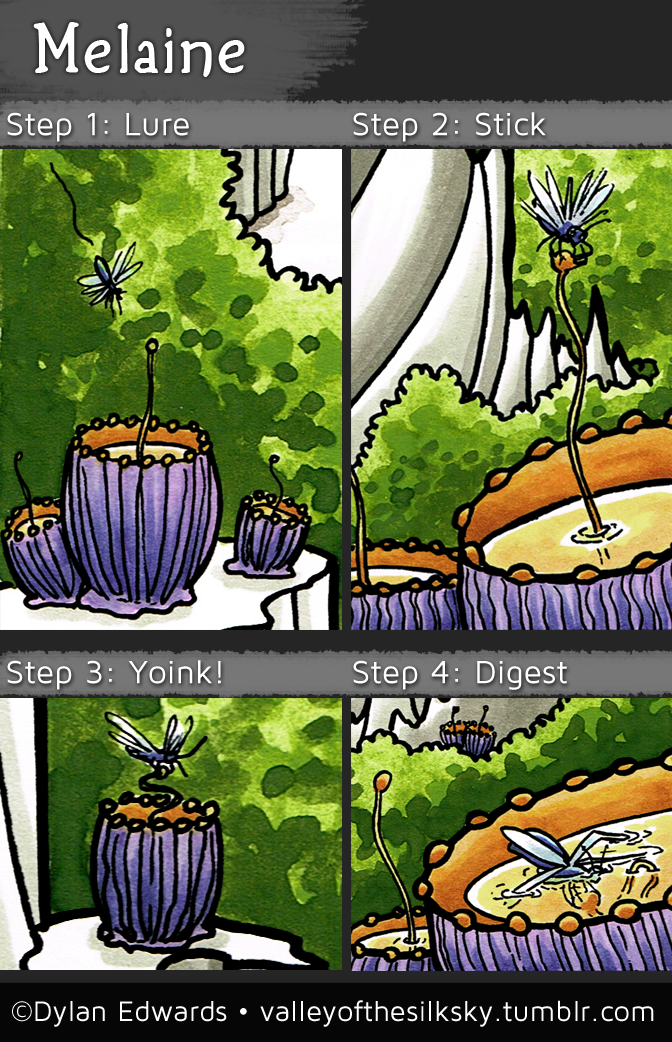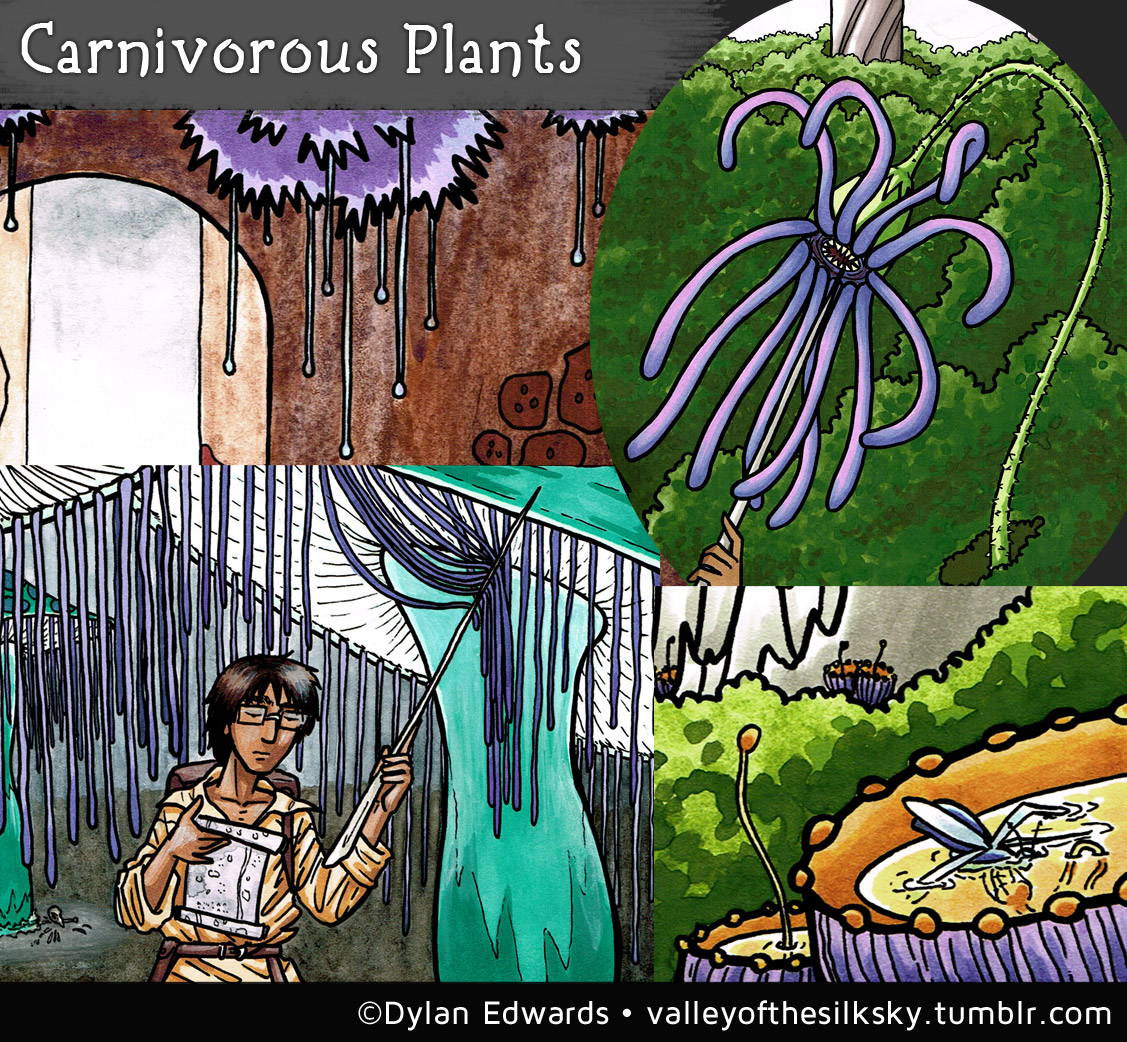
Melaine is a carnivorous fungus that typically feeds on insects or small animals like birds and rodents (the size of the prey depends on the size of the mushroom). Prey are lured in by the sweet-smelling ball bait at the end of a hair trigger. The treacherous ball is extremely sticky, and the struggles of the stuck prey trigger the hair to yoink them forcefully into a bowl of viscous digestive juices. The larger the melaine the more potent the goo, and the larger melaine specimens can eat away at human flesh.
For humans, it’s a “better safe than sorry” situation. If you see (or smell) a patch of melaine, give it a wide berth, lest you accidentally step in one and get splashed with a caustic substance.
Since the digestive goo is viscous and sticky, getting it off once it’s on you is a challenge to say the least. As with poison ivy oils, sometimes efforts to remove the substance just spread it over you even more. You will, at the very least, wind up with some lovely chemical burns, if not open sores.
The Daraz Harcos have significantly thicker and less sensitive skin than humans, so they aren’t as likely to be harmed by the melaine’s digestive juices. They have discovered that a small mushroom isn’t potent enough to do significant damage to the skin, but instead acts as a disinfectant for wounds, and the sticky nature of the goo helps stop bleeding by sealing the cut. Instead of avoiding melaine at all costs, the Harcos seek it out as an important tool in field medicine.

